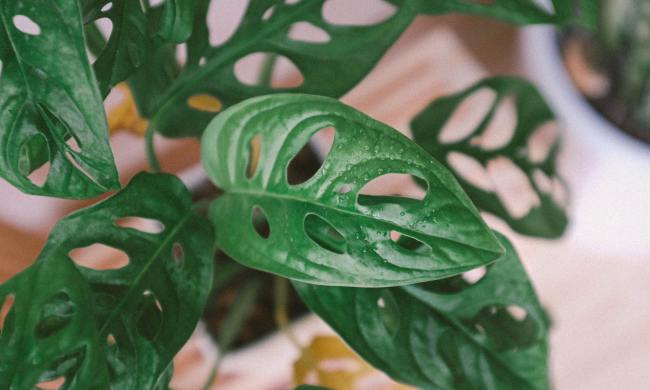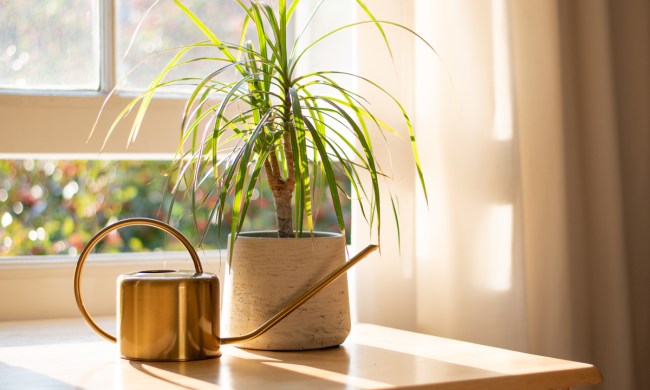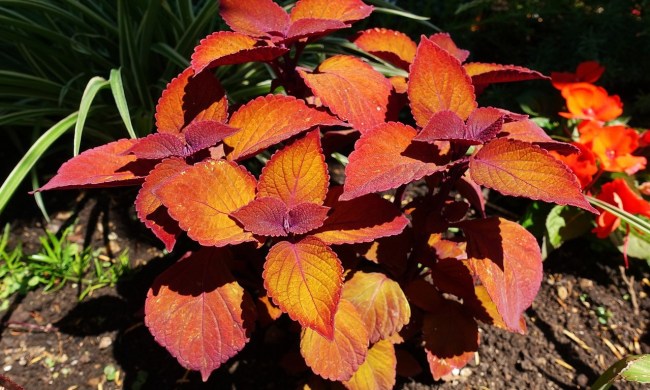Every houseplant has their place. Small ones make great accents for shelves and tabletops, medium-sized ones look great in a windowsill. But what about those large houseplants? You know the ones we’re talking about—they’re all over Instagram and Pinterest. They’re gigantic, consuming entire corners of homes and somehow still surviving. It takes a bit of time, care, and maintenance, but these show-stopping plants are worth the extra attention.
Fiddle leaf fig
The fiddle leaf fig is a beautiful houseplant that’ll do best in humid conditions. Most homes often don’t meet this need—at least not enough for the plant to grow to its fullest—and often that can deter indoor gardeners. If you’re interested in growing one, though, all you’ll need to do is get a humidifier for the space! That should help bring the environment up to snuff for this picky plant, and you’ll feel much better knowing it has what it needs.
Your fiddle leaf fig will also thank you if you dust the leaves with a damp cloth every one to two weeks. This helps the leaves photosynthesize as much sunlight as possible (not to mention it makes them shinier and a point of envy for all your houseplant-loving friends).
Why the fiddle leaf fig is a bit tough
Because fiddle leaf figs are native to tropical parts of Africa, they enjoy warm and wet environments. It can be difficult to mimic these conditions in a home—the only real thing you can do without racking up too many utility costs is get a space humidifier. Luckily, fiddle leafs are quite tough and can tolerate an environment that isn’t entirely perfect. The temperature will be what it is, and as long as the inside of your home doesn’t reach below 60 degrees Fahrenheit, you should be good to go.
Light needs: Direct or indirect sunlight is ideal
Water needs: Likes moist conditions; water when the top inch of soil feels dry
Soil needs: Well-draining, nutrient-rich soil
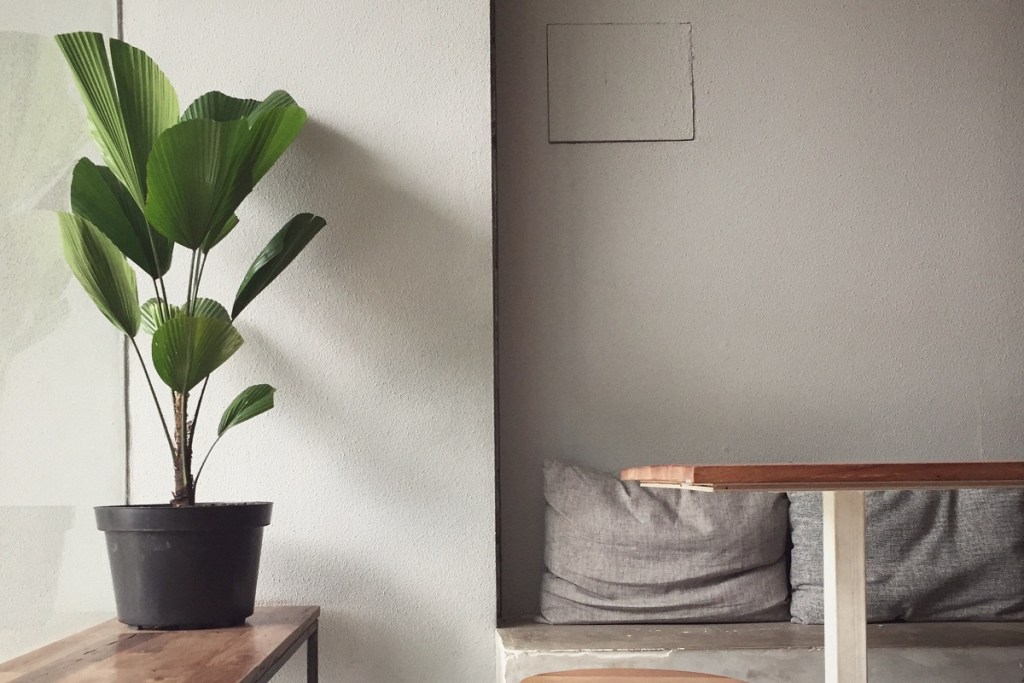
Fishtail palm
Like the fiddle leaf fig, fishtail palms prefer a hot and humid environment. They’re a perfect pair of houseplants! Especially if you aren’t interested in getting a humidifier, one of the ways you can naturally increase the humidity of a space is to group your houseplants together.
Fishtail palms get their name from their fronds that somewhat resemble dead fish tails (which, really, is a little morbid. But hey! It’s a beautiful plant.) You’ll often see them grown in atriums or other larger spaces, so many indoor gardeners don’t consider them a feasible option; however, when grown well, they’re a jaw-dropping plant that’ll catch the attention of all your guests.
Why the fishtail palm is a bit tough
Because of their needs, fishtails aren’t the best long-term indoor plant. They need a lot of strong bright light and warmer air, otherwise they’ll slowly die over time. The somewhat good news is that since fishtails are slow growers, they’re also slow decliners. So if one isn’t doing well, it’ll still be around for a while. If your space doesn’t have a lot of light, you can always invest in some grow lights to help.
Light needs: Lots of indirect light
Water needs: Regular watering; wet but not soggy soil
Soil needs: Well-draining, moist soil
Bird of paradise
Bird of paradise plants can grow up to six feet tall and take anywhere from three to five years before they’re ready to produce blooms. Their large size is quite admirable, though, with mature leaves that can reach up to eighteen inches in size. There are five species of bird of paradise total, but the most common ones grown as houseplants are the orange variety (Strelitzia reginae) and the white variety (Strelitzia nicolai).
When deciding where to put your bird of paradise, keep in mind that their leaves are very delicate. They don’t like to be touched much and can easily shred when brushed against in a hallway or in the middle of the room. The best spot for a bird of paradise would be in a sunny area away from major foot traffic.
Why the bird of paradise is a bit tough
The most challenging thing about growing a bird of paradise indoors is that it may never flower. While ones grown outdoors usually take around three to five years to produce blooms, ideal conditions can’t always be achieved indoors so you may never see one. That said, enjoying a bird of paradise simply for their large leaves is a pleasant experience in and of itself!
If you want to encourage a bloom, stay on top of your care schedule as well as possible and don’t repot unless absolutely necessary.
Light needs: Bright sunlight is ideal; shield from direct midday light
Water needs: Frequent watering
Soil needs: Well-draining, moist soil
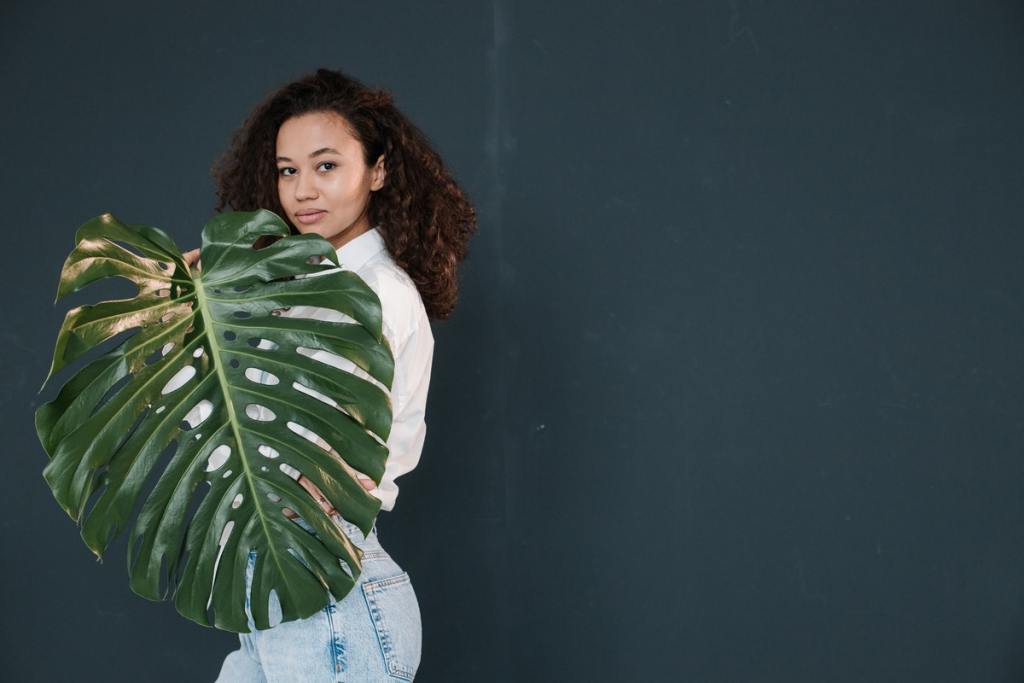
Monstera deliciosa
The monstera deliciosa rose to popularity in 2020 when a lot of people were stuck inside and took up houseplants as a new hobby. The thing is, even though they’re easy to grow, they can get quite large. Many new houseplant growers may not be prepared for the size, which is why the monstera has found itself on this list.
Monstera deliciosas can grow up to ten feet tall indoors with leaves that can become as large as three feet across. Often nicknamed the “Swiss cheese plant,” these monsteras are loved for their perforated heart-shaped leaves. Their beauty is one of the reasons they’re so popular, and their size is one of the reasons your houseplant collection could be the envy of everyone in your life.
Why is the monstera a bit tough?
Simply put: their size. As we mentioned, new and experienced gardeners alike may not be prepared for the size of their monstera or the amount of care and maintenance required to help it reach its full potential. It’s easy to grow, sure, but a ten-foot-tall plant is nothing short of a commitment. If you’re looking to keep one long-term, you should make sure you have a spot in your house that can accommodate its true beauty.
Light needs: Bright, indirect sunlight
Water needs: Regular watering; let soil dry out between waterings
Soil needs: Well-draining, peat-based soil
Dramatic plants can make an indoor gardener’s collection quite dynamic. All the small plants on the shelves will be beautiful accents while one of these four can become a major talking point. You’ll find yourself fielding questions about how you care for it, how you got the leaves to be so big, and (if you’re anything like the rest of us) comments lamenting how they wish they had a green thumb like you. And you’ll love every minute of it.
